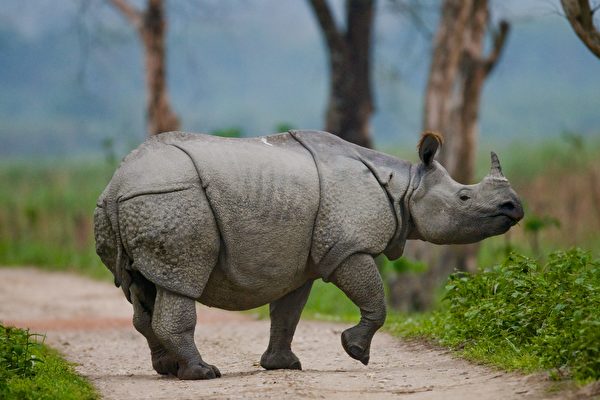International Rhino Foundation’s latest report shows a slight increase in the global population of wild rhinos in 2023 compared to the previous year, but the task of protecting these magnificent creatures remains daunting, with poaching still posing the greatest threat to them.
Currently, there are only five species of rhinos left in the world, including the white and black rhinos living in the African savannah, as well as the Indian, Javan, and Sumatran rhinos inhabiting the Asian continent.
Released on September 22 (World Rhino Day), the annual report by the International Rhino Foundation (IRF) revealed that the estimated global population of wild rhinos in 2023 is close to 28,000, showing a growth from 2022 but still far below the approximately 500,000 in the early 20th century.
Specifically, the population of white rhinos has increased from 15,942 in 2022 to 17,464; while the numbers for black rhinos and Indian rhinos remain roughly the same at 6,421 and 4,014 respectively compared to 2022. The population of Javan rhinos is estimated to be around 50 individuals, and the Sumatran rhino population is estimated to be between 34 and 47 individuals.
India stands out as one of the most successful countries in protecting wild rhinos. Official data from India shows that due to ongoing conservation efforts and effective anti-poaching measures, the population of Indian rhinos has nearly tripled over the past 40 years, from 1,500 individuals four decades ago to over 4,000 today.
In the 1960s, these rare creatures known for their single horn and natural armor were on the brink of extinction with only 600 individuals remaining at one point.
Philip Muruthi, Vice President of Species Conservation at the Africa Wildlife Foundation, stated that effective conservation measures have played a crucial role in increasing rhino numbers.
He noted in the report that Kenya has seen a significant rise in its rhino population from 380 individuals in 1986 to 1,000 individuals last year, thanks to the authorities introducing wild rhinos into protected areas with special care and protection.
Despite the overall increase in the population of white rhinos as indicated in the new report, the situation for the Northern white rhinos, a subspecies, is dire. Currently, only two female Northern white rhinos remain in the world, both in a critically endangered state. Researchers are attempting to utilize previously preserved Northern white rhino embryos for in vitro fertilization, choosing suitable surrogate individuals from other rhino species in a bid to save this subspecies.
The International Rhino Foundation states that while the global population of wild rhinos has been slowly increasing in recent years, the future of these majestic creatures remains precarious. They are not only facing various environmental challenges such as widespread habitat loss and fragmentation but rampant poaching remains the biggest threat to their survival.
Data shows that in 2023, a total of 586 wild rhinos were poached in Africa, a slight increase from 551 in 2022. Among them, South Africa, with over 16,000 wild rhinos, has become a hot spot for poaching incidents.

